|
Books Should Be Free Loyal Books Free Public Domain Audiobooks & eBook Downloads |
|
|
Books Should Be Free Loyal Books Free Public Domain Audiobooks & eBook Downloads |
|
Romance Novels |
|---|
|
Book type:
Sort by:
View by:
|
By: Charles Goddard (1879-1951) | |
|---|---|
 The Perils of Pauline
The Perils of Pauline
The Perils of Pauline is one of the first damsel in distress serials. The story is complete with undaunted hero, courageous damsel, unscrupulous villains galore, and other worldly interest. Before getting married, Pauline wants to experience the world and have adventures. When her guardian dies and leaves her an estate in trust of his secretary, adventures suddenly become more hazardous. Pauline charters aeroplanes, meets untrustworthy pirates, braves dangerous China Town, flies in a hot air balloon, adventures in the Wild West, encounters international spies, and escapes many other perils with the aid of her would-be fiancé, Harry, and an Egyptian mummy. | |
By: Charles Goff Thomson | |
|---|---|
 Terry A Tale of the Hill People
Terry A Tale of the Hill People
| |
By: Charles Major (1856-1913) | |
|---|---|
 When Knighthood Was in Flower
When Knighthood Was in Flower
Set during the Tudor period of English history, When Knighthood Was in Flower tells the tribulations of Mary Tudor, a younger sister of Henry VIII of England who has fallen in love with a commoner. However, for political reasons, King Henry has arranged for her to wed King Louis XII of France and demands his sister put the House of Tudor first, threatening, "You will marry France and I will give you a wedding present – Charles Brandon's head!" | |
By: Charles Neville Buck (1879-1930) | |
|---|---|
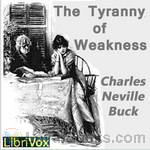 The Tyranny of Weakness
The Tyranny of Weakness
Torn between her love for her aging father, a minister steeped in the puritanical values of old New England, and the young Virginian who was born and raised of southern chivalrous tradition, the many and conflicting emotions which stir deep within Conscience Williams envelop this tale of desire, devotion, inner strength, devious treachery, and individuality of spirit. | |
By: Charles Norris Williamson (1859-1920) | |
|---|---|
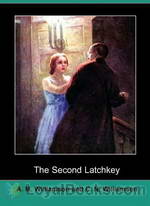 The Second Latchkey
The Second Latchkey
Jewelry thefts, society parties, clairvoyance, and romance marks this mystery, which is set in England and the US in the early 20th century. | |
 It Happened In Egypt
It Happened In Egypt
Lord Ernest Borrow and Captain Anthony Fenton think they know a secret – a secret that could make them both rich. En route, they are sidetracked by Sir Marcus Antonius Lark, a woman who thinks she’s Cleopatra reincarnate, a Gilded Rose of an American Heiress, and Mrs. Jones, a mysterious Irish woman with a past. Will they find the secret? Or will the trip up the Nile on the Enchantress Isis net them another discovery altogether? | |
 The Golden Silence
The Golden Silence
Trying to get away from an engagement he had got himself into more or less against his will, Stephen Knight travels to Algiers to visit his old friend Nevill. On the Journey there he meets the charming and beautiful Victoria. She is on her way to Algiers to search for her sister, who had disappeared years ago after marrying an Arab nobleman. With the support of his friend, Stephen Knight decides to help the girl - but when she also disappears, the adventure begins... | |
 A Soldier of the Legion
A Soldier of the Legion
| |
 The Lion's Mouse
The Lion's Mouse
| |
 The Heather-Moon
The Heather-Moon
| |
 Secret History Revealed By Lady Peggy O'Malley
Secret History Revealed By Lady Peggy O'Malley
| |
 Set in Silver
Set in Silver
| |
 The Port of Adventure
The Port of Adventure
| |
By: Charlotte Brontë (1816-1855) | |
|---|---|
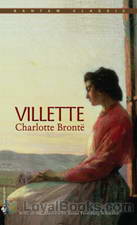 Villette
Villette
Villette was Charlotte Bronte's last published novel. It came out in 1853, just two years before her death in 1855. It is a poignant, strangely lonely and sad work, steeped in conflict between society's demands and personal desires. Set in the fictional town of Villette in France, it is the story of the young and intelligent Lucy Snowe, the narrator in the book. She is described by another character in the book as having “no beauty...no attractive accomplishments...” and strangely seems to lack a personal history or living relatives... | |
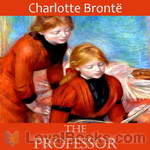 The Professor
The Professor
The book tells the story of a young man named William Crimsworth. It describes his maturation, his loves and his eventual career as a professor at an all-girls’ school. | |
By: Charlotte Mary Yonge (1823-1901) | |
|---|---|
 Heir of Redclyffe
Heir of Redclyffe
The Heir of Redclyffe (1853) was the first of Charlotte M. Yonge's bestselling romantic novels. Its religious tone derives from the High Church background of her family and from her friendship with a leading figure in the Oxford Movement, John Keble, who closely supervised the writing of the book. The germ of its plot was suggested by her friend Marianne Dyson. | |
By: Chretien de Troyes | |
|---|---|
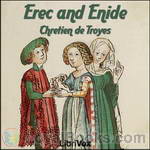 Erec and Enide
Erec and Enide
A medieval romance in which Erec goes through many trials until he is sure of Enide’s loyalty and true love | |
By: Clara Louise Burnham (1854-1927) | |
|---|---|
 In Apple-Blossom Time A Fairy-Tale to Date
In Apple-Blossom Time A Fairy-Tale to Date
| |
By: Cosmo Hamilton (1879-1942) | |
|---|---|
 Who Cares? a story of adolescence
Who Cares? a story of adolescence
| |
By: D. H. Lawrence (1885-1930) | |
|---|---|
 The Rainbow
The Rainbow
Set against the backdrop of a rapidly industrializing England, the bewildering shift in social structure, the fading away of traditions and the advent of new ways of life, The Rainbow by DH Lawrence depicts how one family's story becomes the story of a society. Originally planned as a novel titled The Sisters, Lawrence finally split the theme into two separate novels after many revisions and rewrites. The Rainbow is the first novel in the Brangwen family saga. Tom Brangwen is a small time farmer in rural Nottinghamshire... | |
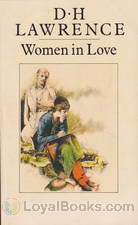 Women in Love
Women in Love
If you have read DH Lawrence's The Rainbow, you'd certainly want to read the sequel, Women in Love. Published in 1920, the two books were originally meant to be a single work, spanning several generations of the Brangwen family, especially the women. However, a complicated publishing history, delays and editorial revisions, followed by the hostile reception and controversies that faced The Rainbow led to a gap of five years between the two books. Yet, by 21st century standards, Women in Love seems almost tame, and modern-day readers may well be bewildered by the amount of criticism it generated among the custodians of morals in an earlier age... | |
 Lost Girl
Lost Girl
"There is no mistake about it, Alvina was a lost girl. She was cut off from everything she belonged to." In this most under-valued of his novels, Lawrence once again presents us with a young woman hemmed in by her middle-class upbringing and (like Ursula Brangwen in The Rainbow) longing for escape. Alvina Houghton's plight, however, is given a rather comic and even picaresque treatment. Losing first her mother, a perpetual invalid, and later her cross-dressing father, a woefully ineffectual small-scale entrepreneur, Alvina feels doomed to merge with the tribe of eternal spinsters who surround her in the dreary mining community of Woodhouse... | |
By: Daisy Ashford (1881-1972) | |
|---|---|
 The Young Visiters, or Mr. Salteena's Plan
The Young Visiters, or Mr. Salteena's Plan
The Young Visiters is a comic romance novella that parodies upper class society of late Victorian England. Social climber Alfred Salteena introduces his young lady friend Ethel to a genuine gentleman named Bernard and, to his irritation, they hit it off. But Bernard helps Alfred in his plan to become a gentleman, which, Alfred hopes, will help him win back Ethel. | |
By: Daniel Defoe (1659/1661-1731) | |
|---|---|
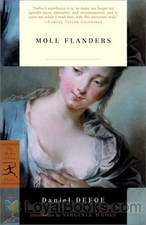 The Fortunes and Misfortunes of the Famous Moll Flanders
The Fortunes and Misfortunes of the Famous Moll Flanders
A woman in prison awaiting a death sentence is given a reprieve because she is pregnant. She migrates to America abandoning the baby to the care of a foster mother. The child, a girl, grows up and begins working as a servant in a wealthy household. Here she is pursued by the two sons of the house and ultimately marries the younger one. When he dies, leaving her with two young children to look after, she begins a life of deception and confidence trickery which ends in great tragedy and disgrace. In her old age, events take a less tragic turn and her redemption comes from sources she least expects... | |
By: David Carpenter Knight | |
|---|---|
 The Love of Frank Nineteen
The Love of Frank Nineteen
| |
By: David Graham Phillips (1867-1911) | |
|---|---|
 The Fortune Hunter
The Fortune Hunter
| |
 The Price She Paid
The Price She Paid
| |
 The Cost
The Cost
| |
By: David Whitelaw | |
|---|---|
 The Princess Galva
The Princess Galva
Edward Povey had been a correspondence clerk for twenty-two years when he was summarily dismissed. So how did he find himself mixed up with an orphan girl, who was really a princess, as she sought to reclaim her throne from the man who had killed her parents? Well, however it had happened, it was romantic. And after two decades in the basement office of a shipping company, he was ready for a bit of romance. (Introduction by MaryAnn) | |
By: de Troyes Chrétien (12th cent.) | |
|---|---|
 Cliges; a romance
Cliges; a romance
| |
By: Dinah Craik (1826-1887) | |
|---|---|
 John Halifax, Gentleman
John Halifax, Gentleman
This novel, published in 1856, was one of the popular and beloved novels in the Victorian era. It is told in the first person by Phineas Fletcher, an invalid son of a Quaker tanner who is presented to us in the beginning as a lonely youth. John Halifax, the first friend he ever had, is a poor orphan who is taken in by his father to help in the work which his sickly son can't constantly do. Phineas tells us in an unforgettable way how John succeeded in rising from his humble beginning and become a wealthy and successful man. But with the money come horrible troubles... In an unforgettable manner, we learn to know all the characters of the novel as if they really lived. | |
By: Dornford Yates (1885-1960) | |
|---|---|
 Jonah and Co.
Jonah and Co.
| |
By: Dorothy Canfield Fisher (1879-1958) | |
|---|---|
 The Bent Twig
The Bent Twig
Semi-autobiographical series of incidents in the life of an intellectual American family in the late 19th - early 20th Century as seen by favored daughter, Sylvia Marshall. Her father is an economics professor in a Midwestern state university and she is following in his inquisitive footsteps. Canfield writes this in a matter-of-fact manner with Tarkingtonesque good humor. | |
By: Dorothy Parker (1893-1967) | |
|---|---|
 Men I'm Not Married To
Men I'm Not Married To
A saucy little poem commenting upon all men that Ms. Parker didn't marry, perhaps implying that upon marrying, the husband becomes far more special than all the other men in the world. It's sort of the same theme embodied in Saint-Exupéry's The Little Prince, who was saddened to discover that his rose was like any other rose, except when he further realized that his rose depended upon him alone for her care, and was the only rose that belonged to him. ~ Summary by Michele Fry | |
By: E. A. Gillie | |
|---|---|
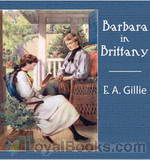 Barbara in Brittany
Barbara in Brittany
Barbara, an English girl and the eldest of her family, spends most days helping her widowed mother care for her younger siblings. Then disaster strikes – or so the children believe! Barbara is taken to France to see Paris by her father’s formidable sister, Aunt Anne. She stays on in Brittany to perfect her French. In this series of funny stories about her adventures in France, we meet a cast of recurring characters – and both Barbara and Aunt Anne find love! (Summary by Sibella Denton) | |
By: E. Temple (Ernest Temple) Thurston (1879-1933) | |
|---|---|
 Sally Bishop A Romance
Sally Bishop A Romance
| |
By: E.D.E.N. Southworth (1819-1899) | |
|---|---|
 The Missing Bride
The Missing Bride
Prepare yourself for a journey, full of adventures and plot twists which will keep you guessing until the very end. This is psychological romance at its best. In the war of 1814, an American heiress falls in love with a British officer. This ill-fated marriage brings together a large group of interesting people who would never have met in other circumstances. | |
By: Edith Wharton (1862-1937) | |
|---|---|
 The Reef
The Reef
George Darrow, Anna Leath’s first love, is finally coming from London to propose to her. However, he drifts to an affair with Sophy Viner, Anna’s daughter’s naïve and young governess. Sophy’s relationship with Darrow and Anna’s family can threaten his success. In this novel, as in many of Wharton’s other well known novels, we see the eternal love triangle. With her sly and lovely writing style, Wharton delivers to us in this wonderful novel a cast of unforgettable characters and many unforgettable scenes which we can vividly imagine. What would Darrow choose: success or love? Would Anna marry him despite his affair with Sophy? (Summary by Stav Nisser.) | |
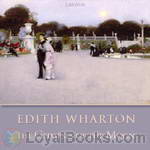 The Glimpses of the Moon
The Glimpses of the Moon
"The Glimpses of the Moon" (1922) is about Nick and Susy Lansing, both of whom live a decadent life in Europe by sponging off wealthy friends. They marry out of convenience and have an "open" relationship, but are unprepared for where their feelings will take them. | |
 The Fruit of the Tree
The Fruit of the Tree
When published in 1907, this novel about the lives of a wealthy mill owner, her socially progressive husband and friends caused a stir due to its treatment of drug abuse, mercy killing, divorce and second marriages. | |
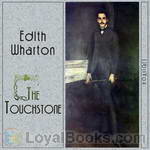 The Touchstone
The Touchstone
Stephen Glennard's career is falling apart and he desperately needs money so that he may marry his beautiful fiancee. He happens upon an advertisement in a London magazine promising the prospect of financial gain. Glennard was once pursued by Margaret Aubyn, a famous and recently deceased author, and he still has her passionate love letters to him. Glennard removes his name from the letters and sells them, making him a fortune and building a marriage based on the betrayal of another. | |
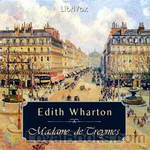 Madame de Treymes
Madame de Treymes
Edith Wharton's 1907 novella explores the milieu of Americans living abroad in Paris. New Yorker John Durham travels to Paris to woo an old flame, Fanny Frisbee, now the Marquis de Malrive. Fanny is separated from her husband and wants to marry John and return to America, but she doubts whether her Catholic husband will grant her a divorce. When John meets Fanny's sister-in-law, the enigmatic Madame de Treymes, he hopes she may be able to help them in their quest for happiness. (Introduction by Elizabeth Klett) | |
By: Edmund Day (1866-1923) | |
|---|---|
 The Round-Up A romance of Arizona novelized from Edmund Day's melodrama
The Round-Up A romance of Arizona novelized from Edmund Day's melodrama
| |
By: Edna Ferber (1865-1968) | |
|---|---|
 Buttered Side Down
Buttered Side Down
"And so," the story writers used to say, "they lived happily ever after." Um-m-m—maybe. After the glamour had worn off, and the glass slippers were worn out, did the Prince never find Cinderella's manner redolent of the kitchen hearth; and was it never necessary that he remind her to be more careful of her finger-nails and grammar? After Puss in Boots had won wealth and a wife for his young master did not that gentleman often fume with chagrin because the neighbors, perhaps, refused to call on the lady of the former poor miller's son? It is a great risk to take with one's book-children... | |
 Show Boat
Show Boat
Published in 1926, Show Boat tells of three generations of the Hawks-Ravenal family and the Cotton Blossom Floating Palace Theatre on the Mississippi and other rivers, from the Reconstruction Era of the 1880s, to the Gilded Age and Roaring Twenties. The story was made into a Broadway musical in 1927 and into films in 1929.NOTE: There are issues of race in the story, particularly anti-Black stereotypes and derogatory terms. It is policy to record texts as written. - Summary by TriciaG | |
By: Edward M. Forster (1879-1970) | |
|---|---|
 Howards End
Howards End
It's sad, but true to say that today Edward Morgan Forster's works are known more from their film and television adaptations rather than from their original novels. Yet, these adaptations have spurred many a fascinated viewer into going back to the library and finding the book that the film or miniseries was based on and this is ultimately the power of Forster's literary appeal. Howard's End was published in 1910 and it marked Forster's first taste of critical and commercial success. He had published three other novels earlier, Where Angels Fear To Tread (1905), The Longest Journey (1907) and A Room With a View (1908) but none of them had been received with so much acclaim... | |
By: Edward M. Hull (1880-1947) | |
|---|---|
 Sheik
Sheik
The novel on which the famous silent movie starring Rudolf Valentino was based. The plot is set in motion as Lady Conway disapproves of Diana's planning a desert trip with just her Arab guides to accompany her. Diana gets kidnapped by the Sheik, Ahmed Ben Hassan. Finally allowed to ride in the desert alone, she plans an escape. However, the Sheik recaptures her. And so the story unfolds. | |
By: Edward P. Roe (1838-1888) | |
|---|---|
 He Fell in Love with His Wife
He Fell in Love with His Wife
James desperately needs someone to help him keep his farm going, but has failure after colossal failure finding a good housekeeper. Alida marries a man only to find out he's already married. She's so undone when she finds out that she just wants to go somewhere where no one will judge her for her misfortune, where she can work and keep herself fed and clothed. James and Alida meet and arrange for a strictly business marriage, leaving loving and honoring out of the vows. The title of the book tells the rest of the story, but the way it gets there is worth the journey. (Introduction by TriciaG) | |
By: Edward Phillips Oppenheim (1866-1946) | |
|---|---|
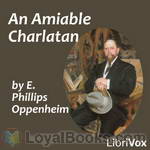 An Amiable Charlatan
An Amiable Charlatan
An Englishman is enjoying his dinner at Stephano's, at which he is a regular diner. A man enters quickly, sits at his table, starts eating his food, and hands him a packet underneath the table! So begins Paul Walmsley's acquaintance - and adventures - with American adventurer Joseph H. Parker and his lovely daughter, Eve. (Intro by TriciaG)Note that there is an alternate reading of section 8. Both are excellent renditions, so enjoy either or both of them. | |
 Anna the Adventuress
Anna the Adventuress
| |
By: Edward Streeter (1891-1976) | |
|---|---|
 Dere Mable
Dere Mable
Bill is in training camp, preparing to go off to World War I. This book is a collection of love letters written to his sweetheart, Mable. The letters are humorous, mis-spelled, and have many stories of life in an army camp – all from Bill’s unique perspective. | |
By: Eleanor H. Porter (1868-1920) | |
|---|---|
 The Road to Understanding
The Road to Understanding
"If Burke Denby had not been given all the frosted cakes and toy shotguns he wanted at the age of ten, it might not have been so difficult to convince him at the age of twenty that he did not want to marry Helen Barnet.""Of course the inevitable happened. However near two roads may be at the start, if they diverge ever so slightly and keep straight ahead, there is bound to be in time all the world between them. In the case of Burke and Helen, their roads never started together at all: they merely crossed; and at the crossing came the wedding... | |
 Miss Billy Married
Miss Billy Married
At the opening to this second sequel to Miss Billy (Miss Billy, Miss Billy's Decision, Miss Billy Married), we find Bertram and Billy finally at the altar. Will wedded bliss ensue and are the patter of little feet on the horizon? Or is misunderstanding and heartache in the cards again? Find out in Miss Billy Married! | |
 Mary Marie
Mary Marie
A charming 'coming of age' story about a young girl, Mary Marie, whose young life is thrown into turmoil as her parents divorce. As she leads two lives, she comes to realize that her parents still love one another, and engineers a reunion. In the end, we discover the long-lasting effect of this turmoil on the adult Mary Marie, and her own marriage." | |
By: Eleanor Hallowell Abbott (1872-1958) | |
|---|---|
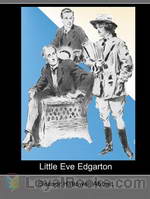 Little Eve Edgarton
Little Eve Edgarton
Eve Edgarton is not who she seems she is. A short encounter with Mr. Barton show that first impressions are not always right or indicative of one’s seemingly obvious preference or one’s proclivity. | |
By: Elinor Glyn (1864-1943) | |
|---|---|
 Man and Maid
Man and Maid
| |
 Red Hair
Red Hair
| |
 High Noon A New Sequel to 'Three Weeks'
High Noon A New Sequel to 'Three Weeks'
| |
 Your Affectionate Godmother
Your Affectionate Godmother
This is a series of seven letters by the eminent author of scandalous romances, Elinor Glyn, written to her godchild Caroline in the years 1912-1914. The Letters give Caroline advice on how best to find her way in life, particularly to matrimony. They contain such gems of wisdom as "It is better to marry the life you like, because after a while the man does not matter", that beauty is of "colossal importance", and that a woman will do well never to ask her husband any questions. The letters are very entertaining to read, though most modern godchildren may not wish to follow the advice too closely. - Summary by Carolin | |
By: Eliza Fenwick (1766-1840) | |
|---|---|
 Secresy, or, the Ruin on the Rock
Secresy, or, the Ruin on the Rock
This is the story of Caroline and Sibella, two female friends. Strong and smart women who try to make it in a man's world while keeping their values and loyalties intact. The only way to do that is to hide a few secrets. Yet secrets cannot remain hidden for ever, and everything has a price. This is both a social novel and a gothic novel. A true page turner with all the elements of a good 18th century novel: a woman locked in an estate, a hidden pregnancy, some politics of marriage, villains, sentimentality and thought provoking philosophy. Summary by Stav Nisser. | |
By: Eliza Haywood | |
|---|---|
 History of Miss Betsy Thoughtless, Vol. 4
History of Miss Betsy Thoughtless, Vol. 4
Betsy Thoughtless is about an intelligent and strong-willed woman who marries under pressure from the society in which she lives. Betsy learns that sometimes giving way to the role of women within a marriage can at times be fulfilling. This is the fourth and final volume in this series. Does she get her man you will have to listen and find out. | |
By: Elizabeth Gaskell | |
|---|---|
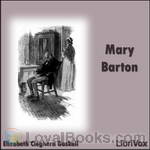 Mary Barton
Mary Barton
Mary Barton is the first novel by English author Elizabeth Gaskell, published in 1848. The story is set in the English city of Manchester during the 1830s and 1840s and deals heavily with the difficulties faced by the Victorian lower class. The novel begins in Manchester, where we are introduced to the Bartons and the Wilsons, two working class families. John Barton reveals himself to be a great questioner of the distribution of wealth and the relation between the rich and the poor. He also relates how his sister-in-law Esther has disappeared after she ran away from home... | |
 Sylvia's Lovers
Sylvia's Lovers
The novel begins in the 1790s in the coastal town of Monkshaven. Sylvia Robson lives with her parents on a farm, and is loved by her rather dull Quaker cousin Philip. She, however, meets and falls in love with Charlie Kinraid, a sailor on a whaling vessel, and they become engaged, although few people know of the engagement. But Charlie gets press-ganged and have to leave without a word. | |
By: Elizabeth Inchbald (1753-1821) | |
|---|---|
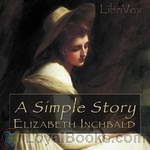 A Simple Story
A Simple Story
The story could really have been simple: Miss Milner, who is admired for her beauty and charm, could have been a socialite, marry a respectable and good looking man and be happy in the standards of her time. But if it was so, why would there be a book? Miss Milner, beautiful and charming as she is, announces her wish to marry her guardian, a catholic priest. But women in the 18th century do not declare their wishes or speak about their passions, and- after all- he is a catholic priest… And if he finds a way to marry her, is this her road to happiness? | |
By: Elizabeth von Arnim (1866-1941) | |
|---|---|
 The Enchanted April
The Enchanted April
It’s a dreary February in post-World War I London when Mrs. Wilkins spots an advertisement in The Times for a small Italian castle for rent in April. She sees another member of her women’s club, Mrs. Arbuthnot, reading the same advertisement and manages to convince her that the two of them should rent it. Both are miserable and lonely in their marriages. They can’t afford the cost of the villa, San Salvatore, on their own and must advertise for two others, eventually recruiting an elderly widow named Mrs... | |
By: Ellen Anderson Gholson Glasgow (1873-1945) | |
|---|---|
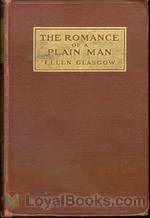 The Romance of a Plain Man
The Romance of a Plain Man
| |
By: Ellen Thorneycroft Fowler (1860-1929) | |
|---|---|
 The Farringdons
The Farringdons
| |
By: Emanuel Swedenborg (1688-1772) | |
|---|---|
 Angelic Wisdom Concerning the Divine Love and the Divine Wisdom
Angelic Wisdom Concerning the Divine Love and the Divine Wisdom
| |
By: Emil Lucka (1877-1941) | |
|---|---|
 The Evolution of Love
The Evolution of Love
| |
By: Emma Goldman (1869-1940) | |
|---|---|
 Marriage and Love
Marriage and Love
| |
By: Emma Wolf (1865-1932) | |
|---|---|
 Other Things Being Equal
Other Things Being Equal
Ruth Levice, the daughter of a rich San Francisco Jewish merchant, meats Dr. Herbert Kemp, and they slowly fall in love. However, she is Jewish and he is not. Can love overcome such an obstacle? And what is more important, duty or love? | |
By: Esther Chamberlain | |
|---|---|
 The Coast of Chance
The Coast of Chance
| |
By: Ethel Hueston (1887-) | |
|---|---|
 Prudence of the Parsonage
Prudence of the Parsonage
| |
 Sunny Slopes
Sunny Slopes
| |
By: Ethel M. Dell (1881-1939) | |
|---|---|
 Charles Rex
Charles Rex
Excerpt: "Saltash was thoroughly cosmopolitan in his tastes; he liked amusement but he abhorred boredom. He was never really wicked unless he was bored. And then- que voulez vous? He did not guide the star of destiny." On his last night in Valrosa, Saltash returns to his luxurious yacht to find a stowaway, a young woman disguised as a boy. She pleads to be kept by him in order to escape from her abuser. Although ill used by life she is still very pure and Saltash falls head over heels in love with her... | |
By: Eugene Walter (1874-1941) | |
|---|---|
 The Easiest Way A Story of Metropolitan Life
The Easiest Way A Story of Metropolitan Life
| |
By: Evelyn Everett-Green (1856-1932) | |
|---|---|
 Monica - Complete
Monica - Complete
Monica was happy at Trevlyn, with her father and step-brother. But what would happen to them when the estate passed to a distant cousin, entailed as it was to the male line? Could she bear to see her invalid brother torn from his home? Should she marry this distant cousin, and thus ensure her and her brother the right to remain at Trevyln? Could she love him? And what about his dislike of her old childhood friend? Was there more to the situation than she knew? | |
By: F. Hamilton Jackson (1848-1923) | |
|---|---|
 The Shores of the Adriatic The Austrian Side, The Küstenlande, Istria, and Dalmatia
The Shores of the Adriatic The Austrian Side, The Küstenlande, Istria, and Dalmatia
| |
By: F. Marion Crawford (1854-1909) | |
|---|---|
 Adam Johnstone's Son
Adam Johnstone's Son
| |
 The White Sister
The White Sister
| |
By: F. Scott Fitzgerald (1896-1940) | |
|---|---|
 This Side of Paradise
This Side of Paradise
A romantic and witty novel that has weathered time to remain one of America’s classic pieces. In the shadows of the great Gatsby is another brilliant novel by F. Scott Fitzgerald. This book is evidence to Fitzgerald’s literal genius because it was written by the author in his twenties to mirror his experiences at the time. It paints a picture of what it was like to be a young man or woman in the 20th century and in the wake of the First World War. The book is set on a foundation of socialist principles... | |
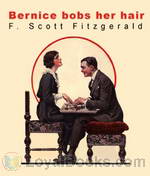 Bernice Bobs Her Hair
Bernice Bobs Her Hair
Pretty but socially clueless Bernice lets her know-it-all cousin push her around, but eventually, something's gotta give! (Introduction by BellonaTimes) | |
By: Fanny Burney (1752-1840) | |
|---|---|
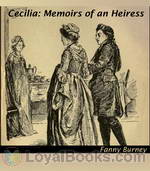 Cecilia: Memoirs of an Heiress
Cecilia: Memoirs of an Heiress
The plot of Cecilia revolves around the heroine, Cecilia Beverley, whose inheritance from her uncle comes with the stipulation that she find a husband who will accept her name. This proves impossible, and she gives up her fortune to marry for love. Jane Austen referred to Cecilia and other novels in her novel, Northanger Abbey: “’And what are you reading, Miss — ?’ ‘Oh! It is only a novel!’ replies the young lady, while she lays down her book with affected indifference, or momentary shame... | |
By: Fergus Hume (1859-1932) | |
|---|---|
 Amethyst Cross
Amethyst Cross
Things look bleak for Lesbia Hales. Her father does not let her marry the man she loves. Her mother is dead. She has to keep secrets in order to promote what she wants for herself. One day, her lover, George Walker, is injured in her home and someone stole the expensive amethyst cross. Who could have done that and why? - Summary by Stav Nisser. | |
By: Florence A. (Florence Antoinette) Kilpatrick (1888-) | |
|---|---|
 Our Elizabeth A Humour Novel
Our Elizabeth A Humour Novel
| |
By: Florence Alice Sitwell (1858-1930) | |
|---|---|
 Daybreak A Story for Girls
Daybreak A Story for Girls
| |
By: Florence Louisa Barclay (1862-1921) | |
|---|---|
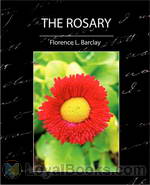 The Rosary
The Rosary
He is a wealthy gifted and handsome young pianist who worships beauty. She is a woman blessed with a divine voice, but a less than beautiful appearance. He proposes, but she cannot believe that his love will last. A tragic accident results in his losing his eyesight. She hears about the accident and takes up employment as his nurse without revealing her identity. This forgotten, 1910 best-seller still holds the power to charm and delight the modern-day reader. One of the most poignant love stories ever written, The Rosary by Florence Louisa Barclay takes its title from the name of a song that was a chart-buster in the early twentieth-century... | |
By: Frances Burney (1752-1840) | |
|---|---|
 The Wanderer
The Wanderer
This is the fourth and final novel by Fanny Burney, the author of Evelina, Cecilia, and Camilla. "Who is "Miss Ellis?" Why did she board a ship from France to England at the beginning of the French revolution? Anyway, the loss of her purse made this strange "wanderer" dependent upon the charity of some good people and, of course, bad ones. But she always comforts herself by reminding herself that it's better than "what might have been..." This is not only a mystery, not at all. It's also a romance which reminds readers of novels by Jane Austen... | |
By: Frances Hodgson Burnett | |
|---|---|
 Theo
Theo
It's described as "A SPRIGHTLY LOVE STORY" and it is written by F. H. Burnett, "one of the most charming among American writers!" | |
 A Lady of Quality
A Lady of Quality
Set in late 1600's England, the story follows the life of a woman living an unconventional life. The loves of her life and all of its ups and downs are included. | |
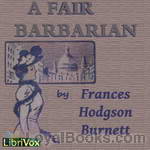 A Fair Barbarian
A Fair Barbarian
The setting is a small English village in the 19th century. When her niece shows up on her doorstep unexpectedly, a quiet spinster finds her life turned upside down. | |
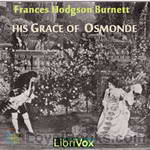 His Grace of Osmonde
His Grace of Osmonde
His Grace of Osmonde, being the portions of that nobleman's life omitted in the relation of his Lady's story presented to the world of fashion under the title of 'A Lady of Quality'Set in late 1600's England, the story follows the life of a woman living an unconventional life. The loves of her life and all of its ups and downs are included. And as above, has more of the story of the Duke who becomes the love of her life. | |
 Vagabondia 1884
Vagabondia 1884
| |
 That Lass O' Lowrie's 1877
That Lass O' Lowrie's 1877
Frances Hodgson Burnett was born and grew up in Manchester, England, and emigrated to the United States with her family at the age of 16. For her first novels, written in Knoxville, Tennessee and published in New York, she drew upon her knowledge of life and speech of the Lancashire working classes. Set in a Lancashire mining town, That Lass o' Lowries is a gritty, and at times brutal, tale of romance across the classes, which stands in stark contrast to her later work. | |
 "Le Monsieur de la Petite Dame"
"Le Monsieur de la Petite Dame"
| |
 One Day At Arle
One Day At Arle
| |
 Miss Crespigny
Miss Crespigny
This is a less known, but not less beautiful, novel by the author of The Secret Garden, A Little Princess, The Lost Prince, Little Lord Fauntleroy, The Shuttle, and many more. There is something different about miss Lysbeth Crespigny. Raised by three maiden aunts and sheltered from the world, she leaves them for the first time in order to explore the world. Yet she is often misunderstood. The world she discovers is more complicated and confusing then she anticipates. She is only 18 when the book starts. However the choices she has to make have consequences which she learns to navigate and become the strong woman she can be. - Summary by Stav Nisser. | |
By: Frances Milton Trollope (1779-1863) | |
|---|---|
 Vicar of Wrexhill
Vicar of Wrexhill
A villainous vicar insinuates himself into the life of a wealthy but foolish widow, ruining the fortunes and happiness of her three children, until they begin to fight back. Published in 1837 by the mother of the better-known Anthony Trollope, this highly readable romance portrays the evangelical movement of the Anglican church in a shocking light that may remind readers of some of the religious abuses of the present day. | |
By: Francis Brett Young (1884-1954) | |
|---|---|
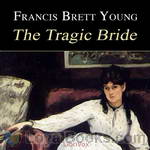 The Tragic Bride
The Tragic Bride
The story centers on Gabrielle Hewish, only and lonely child of Sir Jocelyn Hewish, a loveable lush and owner of the peaceful Roscarna estate nestled in the Irish countryside. In due course, young Gabrielle falls in love with a Navy man whose untimely demise sends her into a depression, and the consequences of which alter her future, culminating in a fascinating and quite unpredictable relationship with Mrs. Payne and her troubled son Arthur. A story of understanding in it’s finest sense and aptly titled, The Tragic Bride is both interesting as a story and telling as a character study. | |
By: Francis Hopkinson Smith (1838-1915) | |
|---|---|
 Little Gray Lady
Little Gray Lady
As every Christmas for the last 20 years, the Little Gray Lady lights a candle in her room and spends the evening alone, thinking of a great mistake she has made so long ago. This year, however, things are to play out differently.. | |